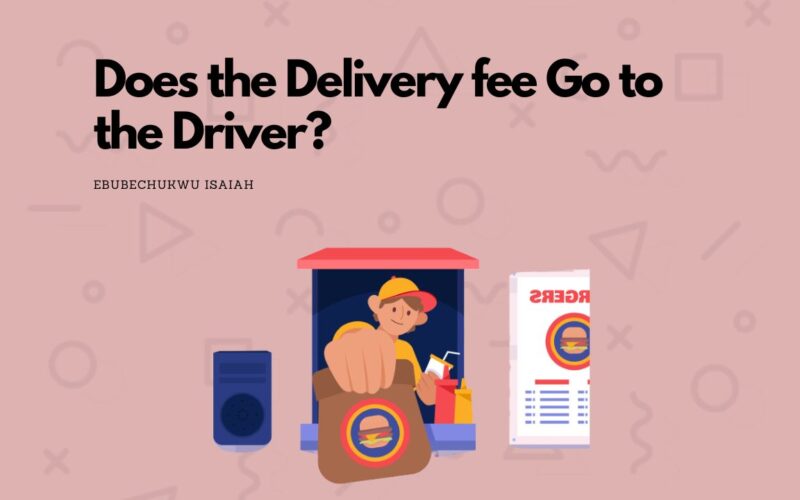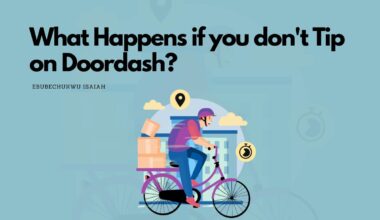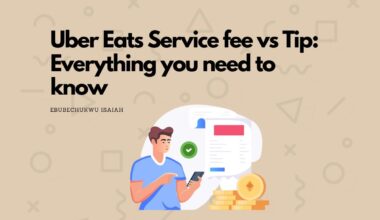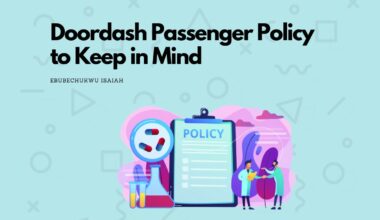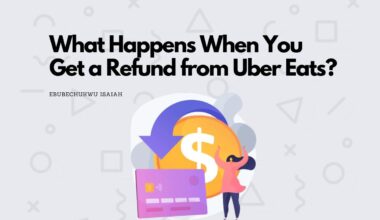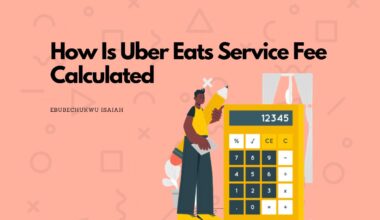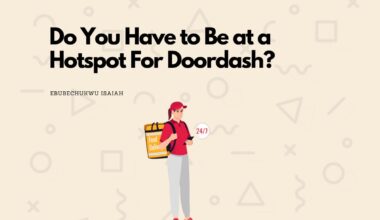For most delivery companies, there is usually a “list” of fees to keep an eye on, and if you don’t have eyes on them, they can all add up really fast.
But you may want to wonder. Why do you need to pay some of these fees, when there’s already a separate delivery charge? What’s the system behind how these fees are managed?
I’ve gotten asked these questions and similar types, countless times. This article will dissect these questions properly.
Enough chatters. Let’s get right into it.
Does the Delivery fee Go to the Driver?
Generally, it’ll depend on the delivery company.
There are myriad of food delivery platforms out there, including the ones we know and the ones we don’t. You know, there could be some saints in between ;).
But let’s get this straight…
For most food delivery companies —including Uber Eats, DoorDash, Grubhub, Postmates, Deliveroo, etc — the delivery fee doesn’t go to drivers.
Delivery fees are still forwarded and managed by delivery companies, where they take a few percent out to pay drivers depending on the company and their payment model.
Basically, one thing to keep in mind is that the amount drivers earn is usually independent of the delivery fee.
For some companies, driver earnings are made under a strict algorithm that considers the desirability of the delivery (how quickly drivers accept it), distance, and estimated delivery time. A typical example of this is DoorDash. We talk about this properly in the third section of the article.
However, the catch? It’s usually way less than the delivery fee.
For instance, on DoorDash, earning less than $3 per delivery is very common, even for orders where the company could have charged over 10$ as delivery fee.
This is why most drivers look up to tips from consumers.
What Happens to other fees aside from the delivery fee?
So what about other fees? Of course, delivery fees are not the only fees we pay.
Charges like service fees, small order fees, and surge fees, among a list of others, are very common with most delivery platforms.
So where do they all go if we just claimed delivery fees are for the companies?
Service fee
This is a common fee you’ll find on many platforms —such as DoorDash, Uber eats, etc —and only started getting widely applied to companies around 2019.
The service fee covers operational costs.
This includes but is not limited to the infrastructure required to keep the app running smoothly, customer support to handle any issues, and marketing campaigns.
It differentiates itself from the delivery fee, as the delivery is expected to cover any expenses related to the delivery of an order. This includes paying the driver, making refunds related to deliveries, etc.
Most importantly, keep in mind that this fee goes to the company and never to the driver.
Small Cart Fees
Ordered just a latte or a single sandwich? You sure would get hit with this fee on most delivery companies. Platforms incorporate this to make low-cost deliveries worthwhile for the company.
The rationale? There are fixed costs associated with every delivery, regardless of the order size. The small cart fee helps balance this out.
Again, this fee goes to the company and not to drivers.
Dynamic Pricing or Surge Fees
Sometimes, when demand is high (say, during a big game, torrential rain, or just peak days in general), platforms may introduce an additional fee.
This is common with Uber Eats and DoorDash.
For this fee, however, delivery platforms will usually pay drivers a percentage.
How are driver earnings per order calculated on most delivery platforms?
There’s no one-size-fits-all answer, as different platforms have different models. But there are some similar steps.
Keep in mind that as we said, delivery fees are independent of the amount driver earns per delivery.
So let’s get straight to the point.
There are two main payment models delivery drivers use:
- Flat rate system (E.g Postmates, Favor, etc)
- Dynamic System (E.g Uber Eats, DoorDash, Grubhub, Deliveroo, Zomato, )
The flat rate system is simply the company paying drivers a flat rate for their time spent at every instance.
For Postmates, the system in detail includes:
- Pickup Fee: Drivers earned a set amount for each order they picked up from a merchant.
- Drop-off Fee: After successfully completing a delivery, drivers received another set amount.
- Per Minute Waited Rate: If a driver had to wait at the pickup location, they were compensated for their time. This started from the time they arrived at the pickup until they left with the order in hand.
- Per Mile Rate: Drivers were compensated for the distance between the pickup and drop-off locations, determined by the quickest available route
Personally, as a delivery driver, I find the flat rate system more worthwhile and profitable in the long run.
So what about the Dynamic system?
The dynamic system is all about using an algorithm to determine how much drivers are paid. The actual way this is determined is usually kept from the public, but a good summary of factors that go into this includes:
- Distance: A rate-per-mile or rate-per-kilometer might be applied. The further the delivery location from the pick-up point, the higher the base pay.
- Time: Some platforms compensate for the time it takes to complete an order, factoring in an estimated rate per minute.
- Order Complexity: Delivering ten pizzas to a corporate office is a lot different than dropping off a single sandwich. Some platforms might adjust the base pay considering the size or complexity of the order.
Final Thoughts
Delivery fees are usually to the company and not to drivers. Again, the amount drivers earn per delivery is independent of delivery fees.
As an Amazon Associate, I earn a small commission from qualifying purchases. Learn more about this.
